- Home
- Alison Weir
Traitors of the Tower Page 4
Traitors of the Tower Read online
Page 4
The Dorsets wanted Jane to be well taught. Their hopes of her were high. As soon as she was four, they arranged for her to have a tutor and be drilled in her lessons. They meant to make her a fit wife for a king. Jane was a clever child, very bright and able. Much was asked of her, but she did well in her studies, and grew to love her teachers.
Jane was a tiny girl, with fair, freckled skin and sandy red hair. She was plain rather than pretty, but that did not matter too much, because she was royal. All her life, her parents would look upon her as a pawn to be moved at their will. Worse still, they ill treated her badly in body and in spirit. They beat her and told her off for the slightest fault. They made her go hunting, which she hated. They dressed her in rich silks, but told her she would not go far on looks alone.
Two people brought some comfort to the young child. One was her kind nurse, Mrs Ellen. The other was her tutor, John Aylmer, who loved her and taught her to value learning for its own sake.
The happiest years of Jane’s life were perhaps those she spent at court in the loving care of Henry VIII’s sixth queen, Katherine Parr, who helped this clever and able child in her studies. Like John Aylmer, Katherine Parr was a staunch Protestant. Both of them may have inspired Jane to adopt the new faith, to which she stayed true all her life.
After Henry VIII died in 1547, his son Edward VI, then aged nine, became king and Jane went to live at Chelsea with the widowed Katherine Parr. Soon afterwards, Katherine married the charming and cunning Thomas, Lord Seymour, brother of the late Queen, Jane Seymour. Thomas Seymour now joined Lady Jane Grey’s parents in plotting to marry her to the young King. He paid a lot of money to make her his ward, and told the Dorsets they would soon see their daughter Queen of England.
But Thomas Seymour had no power, and no way of bringing about the marriage. King Edward VI wanted to marry Mary, Queen of Scots, or a rich French princess. He was not interested in making Jane his wife.
Because King Edward was a child, England was then ruled by Thomas Seymour’s brother, Lord Protector Somerset. Somerset found out about the plot to marry Jane to Edward, and was very angry with Seymour. Yet Jane was allowed to remain in Katherine Parr’s household, and she must have been deeply upset when Katherine died in childbirth in 1548. Wearing a black gown, ten-year-old Jane acted as chief mourner when the Queen was buried at Sudeley Castle.
After that, she had to return home. Her parents wanted her brought up to be good, meek, sober and ready to obey them in all things, and she must have known what that meant. Her misery was clear to the famous tutor, Roger Ascham, who spoke with her at her family home when she was thirteen.
She told him, ‘When I am with my father or mother, whether I speak, keep silent, sit, stand, eat, drink, be merry or sad, I must do it as perfectly as God made the world.’ If she did not, she would be pinched, hit or worse. ‘I think myself in hell,’ she wept.
Under Edward VI, England had turned Protestant. The last years of the reign saw a growing gulf between Lady Jane Grey and the King’s sister, Princess Mary, over matters of faith. Mary was a true Catholic, Jane a firm Protestant. In 1551, Jane visited Mary’s house, New Hall in Essex, and there, in the chapel, saw a lady bow to the consecrated bread on the altar.
‘Why do you do that?’ Jane asked.
‘I bow to Him that made us all,’ the lady said.
‘How can He that made us all be there, when the baker made Him?’ Jane cried. Mary was shocked when she heard this. Yet she still tried to be friendly to Jane. She sent her a gown and some jewels. Jane would not wear them, as they were too rich. She now liked to wear sober black and white clothing, like a good Protestant girl.
By 1553, young King Edward VI was dying. Somerset was dead, and a mighty duke called John Dudley was ruling England in Edward’s name. Dudley was making hasty plans to stop Mary from ever coming to the throne. He and Edward VI agreed that the claims of Mary Tudor and her sister Elizabeth should be passed over, and that the crown was to be left to Edward’s cousin, Lady Jane Grey.
There were good reasons for this. Dudley wanted to remain in power. He could only do that if England had a monarch who would bow to his rule. Jane was the only member of the royal family who was likely to do that. But Jane proved not to be the meek little thing that Dudley thought her to be. She was a feisty, stubborn teenager, clever and candid, and not afraid to stand up to him.
Dudley had already got Jane’s parents to agree to a marriage between Jane and his son, Lord Guildford Dudley. Guildford was tall, fair and good-looking, but he was spoilt and surly. Jane did not want to marry at all. She wanted to be left alone with her books. She hated the Dudleys, and told her parents she would not have Guildford, but after being beaten by her mother, she had no choice but to agree. The marriage went ahead, but it was not a happy one. Jane refused to sleep with her husband. Nor would she name him king when the time came.
After Edward VI died in July 1553, Jane was brought to Syon House near London and there forced to agree to become Queen of England. When she saw all the court waiting for her, she began to shake with fright. Dudley led her to the throne and told her, to her horror, that Edward VI had named her his heir. As every person in the room knelt before her, Jane fainted. No one went to help her.
When she came to, she knew she must make a stand. She got up and said, ‘The crown is not my right. It pleases me not. Mary is the rightful heir.’ It did no good. Dudley, her parents and her husband Guildford forced her to do their will, and in the end, she had to give way. But she was not at peace with herself. She wrote later, ‘It did not become me to accept.’
Soon afterwards, Jane was taken to the Tower of London to await her crowning. But her reign was to prove the shortest in English history. The people supported Mary, the rightful Queen. No one wanted Jane. As Mary was proclaimed queen, to the people’s joy, Dudley was taken to the Tower. He was soon to die as a traitor.
Jane was at supper that day. She was aware of how quiet it was. Then her father ran in and tore down the royal arms above her chair.
‘You are no longer queen,’ he told her. She was not sorry to hear it.
‘May I go home?’ she asked. Her father did not answer, but fled from the Tower, leaving her to her fate. Soon, the guards came for her.
She was moved from the palace to the house of one of the jailers. They let her have books, and she lived in some comfort. She ate her meals with the jailer and his family. It was not a bad life, and she did not complain.
Jane had not wanted the throne, but in taking it she had been guilty of treason. Mary was right to fear that she would remain a focus for Protestant plots. So she kept her in the Tower, well looked after, but still a prisoner. She did not wish her harm, and meant to set her free one day, as soon as Mary herself had a son to be king after her.
Despite the Queen’s wish to show mercy, Jane and Guildford were put on trial and sentenced to death. It was just for show, they were told. Mary would spare them the axe. ‘It is believed Jane will not die,’ wrote a courtier.
But Mary had restored the Catholic faith in England. She would burn those who did not accept it. She was planning to marry Philip of Spain, and the people did not want a foreign prince to rule over them. Early in 1554, Sir Thomas Wyatt led a major revolt against the marriage. Mary came close to losing her crown, but she made a brave stand, and the revolt was put down. It had been a near thing, and the council was in a panic.
Jane’s father had been one of the rebel leaders, and had made it clear that he wanted his daughter Jane back on the throne. That was high treason. Jane knew nothing about it, nor had she had anything to do with the revolt. But that made no difference to those who thought she was a danger to Queen Mary.
Mary’s lords now insisted that she put to death all who were a focus for any further revolt. It was made clear to her that Philip of Spain would not marry her unless Jane was ‘removed’. Mary was in a corner. She had no choice in the matter, and a date was set for Jane’s sentence to be carried out. On being told she
was to die, Jane said, ‘I am ready and glad to end my woeful days.’
But Mary was deeply troubled about sending her young cousin to her death. She sent a priest to convert Jane to the Catholic faith. Jane was told that if she agreed, she might live. But she would not deny her Protestant God. ‘It is not my desire to prolong my days,’ she told the priest. He was moved by her faith, and asked if he could be with her at the end.
On 12 February 1554, Jane was ready to die. ‘My soul will find mercy with God,’ she wrote. Early in the day, ladies came to make sure she was not with child. If she had been, she would have been spared the axe, but she was not.
She put on a black dress and stood at the window. She had not agreed to see her husband Guildford to say farewell, but she had said she would watch him go to his death. She saw him weep as he walked under guard to Tower Hill. Not long afterwards, she saw a cart come back. It carried his bloody head and body, wrapped in white cloths. She cried out, ‘Oh! How bitter is death!’
Now she saw the headsman on his return to the Tower. It was time.
On the arm of her jailer, Jane walked to the scaffold. She was calm and brave. Her former nurse, Mrs Ellen, and her ladies came after, in floods of tears, and then the priest, keeping his promise. Jane climbed the steps and spoke to the crowd.
‘Good people, I am come to die, by law,’ she began. She said she had been guilty in taking the throne, but guiltless in never having wanted it. ‘I die a true Christian woman,’ she ended.
She asked the priest to join her in prayers, but he was too choked to reply. She kissed him goodbye as they held hands. The headsman tried to help her untie her gown, but she would not let him, and did it herself. He knelt, asking her to forgive him for what he must do, which she said she did.
It was now that she saw the block. He told her to stand in front of it.
‘I pray you do it quickly,’ she begged, and fell to her knees. ‘Will you take it off before I lay me down?’ She meant her head.
‘No, Madam,’ he said.
Jane bound her eyes and felt for the block. It was not there.
‘What shall I do?’ she cried in mounting panic. ‘Where is it?’
No one moved as she groped in the air. Then someone came and guided her hands. She laid her head down.
‘Lord, into Thy hands I commend my spirit!’ she cried. The axe came down. One witness wrote that he had never seen so much blood.
The headsman lifted the head.
‘Behold the head of a traitor!’ he called out.
Jane’s remains, half naked, were left on the scaffold for some hours. Then she was buried in the chapel of St Peter, near her husband Guildford. Her father was beheaded not long afterwards, on Tower Hill. Her mother married again almost at once, and lived to see Elizabeth I come to the throne after Queen Mary died, in 1558.
Chapter Seven
Robert Devereux, Earl of Essex (1601) - ‘Strike Home!’
Robert Devereux was the son of the Earl of Essex. His mother Lettice was a cousin of Queen Elizabeth I, and had been called ‘one of the best-looking ladies of the court’. For some months, Lettice had been having an affair with the Earl of Leicester. That had to be kept secret because she was married and Leicester was the Queen’s great favourite. But Robert’s father, the Earl of Essex, found out about the affair, and fell out with his wife and Leicester.
In 1576, Robert’s father was serving in Ireland when he fell ill and died. At the end, he sent to Queen Elizabeth to ask her to ‘be as a mother to my children’. His heir, Robert, was just nine when he became Earl of Essex after his father’s death. He had been brought up in the house of William Cecil, the Queen’s chief minister, and the Queen now put him under William Cecil’s care.
In 1578, Robert’s mother Lettice married the Earl of Leicester. Queen Elizabeth never quite forgave Leicester for this, and would not allow Lettice into her presence. In 1584, when Robert, Earl of Essex, was eighteen, Leicester brought him to court, where his good looks and manners ‘won him the hearts of both Queen and people’. Yet it would be some time before Elizabeth came to see Essex as more than just a nice, polite boy.
In 1585, when Leicester led an army into Holland, Essex went with him as General of the Horse. He did so well in the jousts in honour of Leicester’s coming that ‘he gave all men hope he would be noble and forward in arms’. In 1586, he fought bravely in battle and was knighted by Leicester. They came back to England later that year.
Leicester returned to Holland in 1587 and, while he was away, Essex became closer to Queen Elizabeth. Essex was a good Protestant, with old royal blood in his veins. He was gallant, bold and generous, very tall, with reddish-brown hair and a beard. He wrote poems, was a good letter-writer and acted well in court plays. Women loved him.
Elizabeth found him charming and wanted him with her all the time. She knew he was not wise in state matters, but in other ways he was her idea of the perfect man. They went for walks and rides by day, and played cards all night to the sound of music.
By then Elizabeth was fifty-three, thirty-three years older than Essex, but that did not stop him paying court to her and acting as if he were in awe of her looks. The Queen thrived on his praise, as she had put about the myth that her beauty would never die, but she was now wearing wigs and heavy make-up to maintain it. With Essex, she seemed to have regained her lost youth.
But there was a darker side to Essex. He could be moody, lordly, spoilt and sulky, and, in a temper, would act without thinking. He never hid his feelings, and it was said that ‘he carries his love and his hatred on his face’. He was a dreamer who rushed through life. He slept around, like any other young buck of the court, but then went to church to think on his sins.
He wanted to be a leader of men, but he never had the money to make that dream come true. He lived well beyond his means, leaving the Queen to pay his debts. He wanted glory in the field of battle, but was too rash and careless to make a great commander.
Essex and the Queen were two strong people, and often clashed. There would be sharp words, then Essex would sulk. Elizabeth needed him more than he needed her, so she always gave in. He would not allow her to rule him. He even ordered her about, and she let him do it. People were amazed that he got away with such conduct. But Elizabeth drew a firm line at giving him the high office that he really wanted. Sparks flew, but he could not bully her into agreeing.
In 1588, after England drove off the Spanish Armada, Leicester died. Elizabeth was bowed with grief, and after a time she turned to Essex, who soon became the most favoured man at court. He was liked by the people, even to the point of making the Queen jealous. The chief minister, William Cecil, tried to take him under his wing and teach him state affairs, but Essex wanted to get to the top as fast as possible.
When Elizabeth smiled on other young men at court, Essex made scenes and picked fights with them. In 1589, he was keen to go with Sir Francis Drake to destroy the Spanish fleet, but Elizabeth forbade it. He went anyway, much to her fury. The attack failed, but it was Drake who felt the Queen’s anger, not Essex, whom she forgave.
William Cecil’s son Robert was now one of the leading men at court, but Essex hated him. The Cecils stood for peace and stable rule, while Essex and his friends wanted war with Spain and the glory it would bring. The two parties became bitter rivals.
In 1590, Essex married in secret. His bride was Frances Sidney. Elizabeth thought Frances was not good enough for him, and raged for two weeks when she found out. Clad in black, Essex staged a funeral at court to show he was in disgrace. After that, Elizabeth took him back into favour. Frances stayed in the background.
By 1593, Essex had shown himself useful in setting up a spy service for the Queen, and at last, in reward, she gave him a seat on the council. ‘He is a new man,’ it was said, ‘and has given up his former tricks.’ But by 1596, Essex was bored with state duties and seeking action. Again, Elizabeth sent English ships to destroy Spain’s new fleet. Essex carried out a daring raid on the po
rt of Cadiz, causing dreadful damage. When a thrilled Elizabeth heard of it, she wrote to Essex, ‘You have made me famous.’
It was Essex whose fame was sung far and wide. He had proved himself a hero, and was the man of the moment. When he got home, he was given a joyous welcome. No one was more loved by the people.
Elizabeth was jealous. When Essex came to her, she did not hail him as a victor, but asked what profit and gain he had brought from Cadiz. He had to admit there was none, and she snapped at him.
In truth, she feared he was a danger to her, being so loved by the people, and time would prove her right. She was now growing tired of him, and he of her. During one of their rows, he turned his back on her, she boxed his ears, and he even drew his sword and made to attack her. Anyone else would have been sent to the Tower, but Elizabeth did nothing. She feared how Essex might react.
In 1599, Essex was sent to Ireland to deal with the rebel Earl of Tyrone. His mission was a failure. He did not obey the Queen’s orders to take to the field, and instead made a shameful peace with Tyrone. Elizabeth had told him to stay where he was, but he deserted his army, and hurried home on horseback to explain himself to her.
When he arrived at Nonsuch Palace, he burst into the Queen’s rooms. Elizabeth was without her wig and make-up, and not yet dressed. Essex saw before him an ugly old woman. Elizabeth could not forgive that either. Essex was put under arrest, but no one thought the Queen would keep him locked up for long.
But Elizabeth had now heard how Essex had dined with the rebel Tyrone after making peace. That was the ruin of Essex. Kept under house arrest for a time, he fell ill. When he felt better, he began forming a party of young lords who felt they should have high office at court, and that England should fight Spain again. They began plotting against the council. In February 1601, they had the play Richard II staged in London. In this play, a king is toppled from his throne. That was a step too far.

 Richard III and the Princes in the Tower
Richard III and the Princes in the Tower Britain's Royal Families: The Complete Genealogy
Britain's Royal Families: The Complete Genealogy The Lady in the Tower: The Fall of Anne Boleyn
The Lady in the Tower: The Fall of Anne Boleyn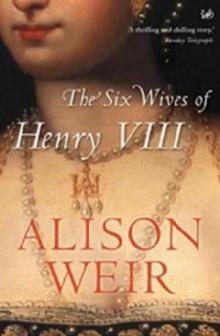 Six Wives of Henry VIII
Six Wives of Henry VIII Elizabeth of York: A Tudor Queen and Her World
Elizabeth of York: A Tudor Queen and Her World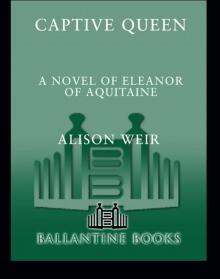 Captive Queen
Captive Queen Innocent Traitor
Innocent Traitor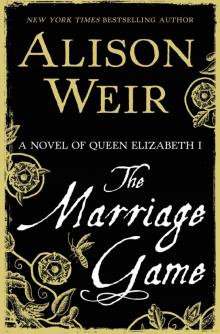 The Marriage Game
The Marriage Game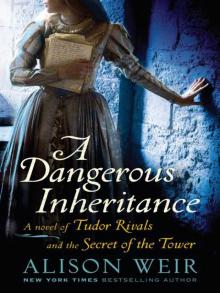 A Dangerous Inheritance
A Dangerous Inheritance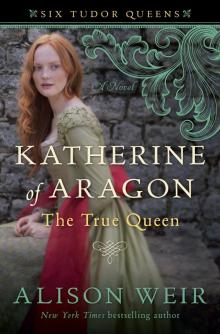 Katherine of Aragón: The True Queen
Katherine of Aragón: The True Queen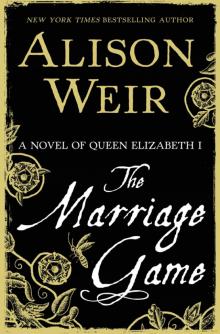 The Marriage Game: A Novel of Queen Elizabeth I
The Marriage Game: A Novel of Queen Elizabeth I Princes in the Tower
Princes in the Tower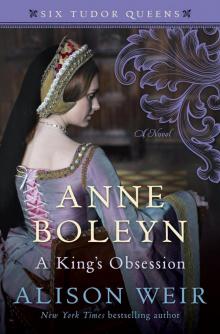 Anne Boleyn: A King's Obsession
Anne Boleyn: A King's Obsession Traitors of the Tower
Traitors of the Tower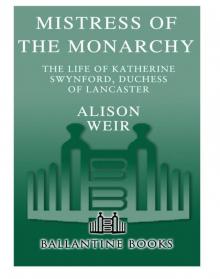 Mistress of the Monarchy: The Life of Katherine Swynford, Duchess of Lancaster
Mistress of the Monarchy: The Life of Katherine Swynford, Duchess of Lancaster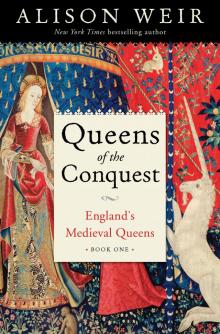 Queens of the Conquest: England’s Medieval Queens
Queens of the Conquest: England’s Medieval Queens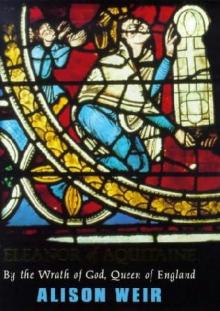 Eleanor of Aquitaine: A Life
Eleanor of Aquitaine: A Life Mary, Queen of Scots, and the Murder of Lord Darnley
Mary, Queen of Scots, and the Murder of Lord Darnley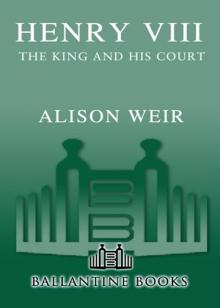 Henry VIII: The King and His Court
Henry VIII: The King and His Court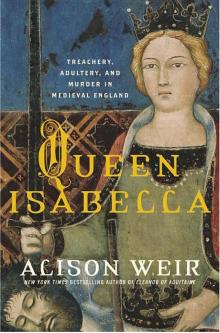 Queen Isabella: Treachery, Adultery, and Murder in Medieval England
Queen Isabella: Treachery, Adultery, and Murder in Medieval England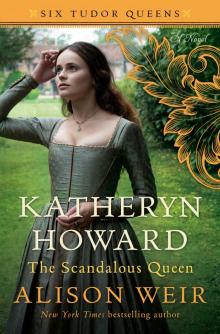 Katheryn Howard, the Scandalous Queen
Katheryn Howard, the Scandalous Queen Arthur- Prince of the Roses
Arthur- Prince of the Roses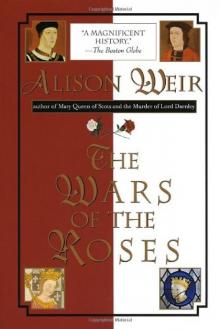 The Wars of the Roses
The Wars of the Roses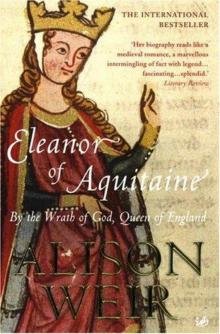 Eleanor of Aquitaine: By the Wrath of God, Queen of England
Eleanor of Aquitaine: By the Wrath of God, Queen of England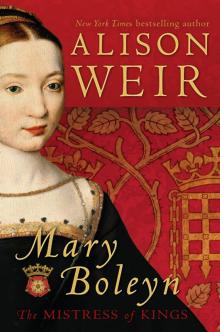 Mary Boleyn: The Great and Infamous Whore
Mary Boleyn: The Great and Infamous Whore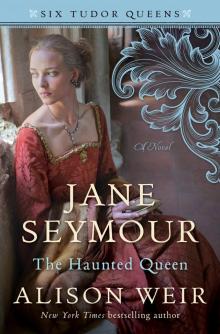 Jane Seymour: The Haunted Queen
Jane Seymour: The Haunted Queen Anna of Kleve, the Princess in the Portrait
Anna of Kleve, the Princess in the Portrait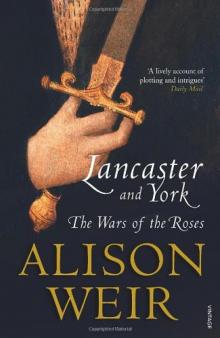 Lancaster and York: The Wars of the Roses
Lancaster and York: The Wars of the Roses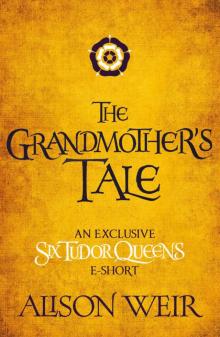 The Grandmother's Tale
The Grandmother's Tale The Princess of Scotland (Six Tudor Queens #5.5)
The Princess of Scotland (Six Tudor Queens #5.5)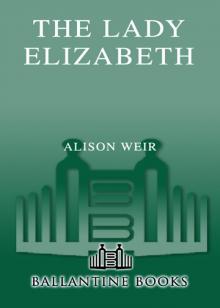 The Lady Elizabeth
The Lady Elizabeth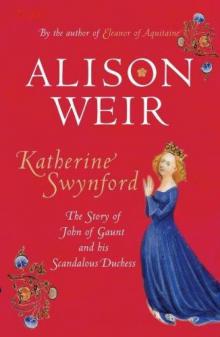 Katherine Swynford: The Story of John of Gaunt and His Scandalous Duchess
Katherine Swynford: The Story of John of Gaunt and His Scandalous Duchess The Curse of the Hungerfords
The Curse of the Hungerfords The Lost Tudor Princess: The Life of Lady Margaret Douglas
The Lost Tudor Princess: The Life of Lady Margaret Douglas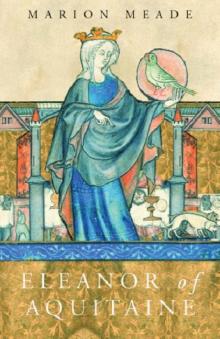 Eleanor of Aquitaine
Eleanor of Aquitaine Mistress of the Monarchy
Mistress of the Monarchy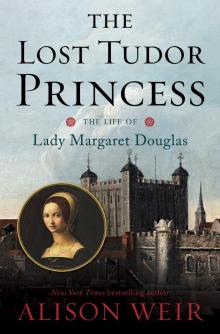 The Lost Tudor Princess
The Lost Tudor Princess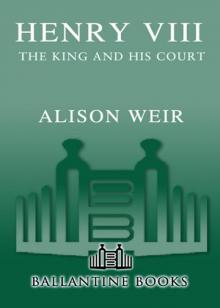 Henry VIII
Henry VIII Anne Boleyn, a King's Obsession
Anne Boleyn, a King's Obsession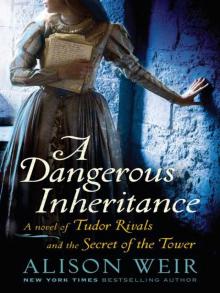 A Dangerous Inheritance: A Novel of Tudor Rivals and the Secret of the Tower
A Dangerous Inheritance: A Novel of Tudor Rivals and the Secret of the Tower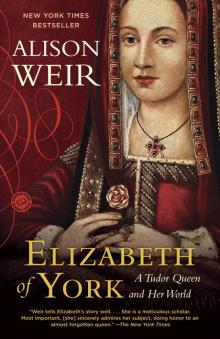 Elizabeth of York
Elizabeth of York Katherine of Aragon, the True Queen
Katherine of Aragon, the True Queen Katherine Swynford
Katherine Swynford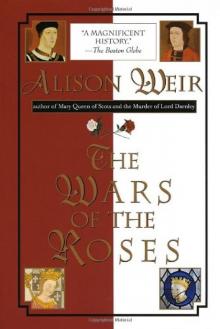 Wars of the Roses
Wars of the Roses Queens of the Conquest
Queens of the Conquest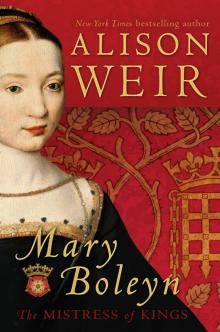 Mary Boleyn
Mary Boleyn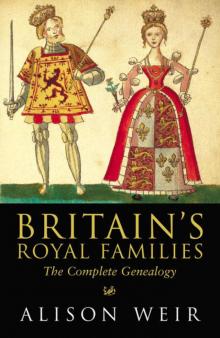 Britain's Royal Families
Britain's Royal Families The Tower Is Full of Ghosts Today
The Tower Is Full of Ghosts Today Life of Elizabeth I
Life of Elizabeth I Anne Boleyn A King's Obssession
Anne Boleyn A King's Obssession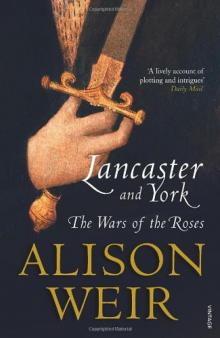 Lancaster and York
Lancaster and York Jane Seymour, the Haunted Queen
Jane Seymour, the Haunted Queen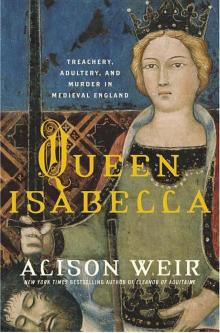 Queen Isabella
Queen Isabella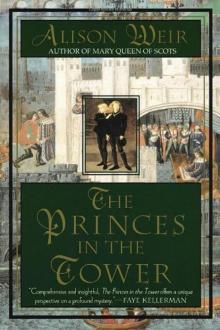 The princes in the tower
The princes in the tower